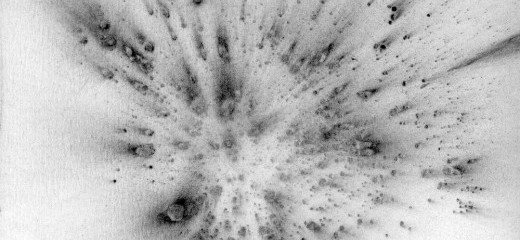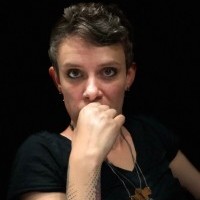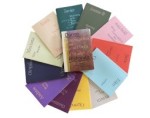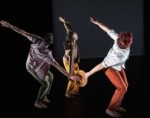
Jumping in with Both Feet
by Emilee Lord
The Body in Language: An Anthology, edited by Edwin Torres, covers the complex relationship humans have to both the body and verbal and non-verbal expression through poetry, drawings, scripts, philosophy, linguistics, performance, acoustics, and healing practices, to name a few.
The work in general feels informal. Torres sets up a broad, powerful topic to be explored by the reader on their own terms. The complexity and the beauty of the human body––and our attempt to describe our experience of it––is palpable within the ordering of the collection, though he does not offer an analytical thread.
Torres structures the anthology into the four elements of fire, water, earth, and air. He assigns concepts of the body to each of these elements. Air is assigned “foundation”, earth to “emotion”, water to “thinking”, and fire to “creation.” He aligns each contributor with one of the elements and each section in the book is made up of the four elements. The aligning and configuration does not seem intuitive to me at first. Over time it becomes evident that his choices are poetically consistent but the assembly has been done without much explanation, so I dig deeply for the reason behind each of the texts’ categories, which doubles my work as a reader rather than providing me a map for the work overall. It’s not immediately obvious how this structure will play out but it begins to shape the reading over time. As Torres quotes Mary Oliver in the introduction it is, “Something more than us/that is about us.”
What this collection holds is large in scope and intimate in experience. Certain portions feel Whitman-like in the celebration of this body-language/language-body we collectively share. Other portions dissect the painful truth of language as a form of control over the body. An example of this is found in Lake Michigan, scene 2 by Daniel Borzutsky. “Sing, they say, or we won’t love you… Authoritative bodies experimenting with just how far their fingers can reach down our throats... The emblem of the nation shoved into my eye sockets and I cry and cry as my head is crushed…” Less violent than this language is Jennifer Bartlett’s poem Autobiography in which she discusses the word cripple and her experience with walking, shaming, and well-meaning inspiration porn.
The essays are broken up by pieces from visual artists. Fawn Krieger’s art addresses current intersections of visual and performing art through her investigation of haptics, which is the language of touch and non-verbal communication. Her pencil on paper drawings depict moments of contact in a field of black gesso. They are isolated images of hands and feet pressing and bodies folding. This set of drawings and the brief paragraph presented with them allow me to expand my approach to how language is framed in other sections of the book.
In Mary Cappello’s fascinating essay, How does someone swallow that?, she discusses a clearly gendered early notion of the “hysterical swallow” and describes emotional states being very much about the body as indicated by the way we have built language around it. She gives a good deal of examples such as “I’m fed up!” and “I haven’t taken it all in.” This feels like an important part of the read for me as I begin to see how the experience of the body has in fact created language. Jen Hofer’s essay (em)body embe(re)d unlocks the collection at large, “There is no language without body. There is body without language - before language, after language, beyond language. Más allá: (more over there). In language we have no body. In language we are all body.”
The collection creates a web of thought around the idea of embodiment and human connection. Where I find this most at stake is in acupuncturist/hypnotherapist Mona Chopra’s interview with Torres in which she suggests we are all “language beings” and Torres goes on to wonder if that doesn’t make us “living poetry.” I extrapolate from this that the anthology itself is a book of poetry, a collection of work on that which is felt, lived, and embodied. When you think about how the use of language itself is scripted from our corporeal presence, reading through this collection is to experience the body.
Torres has done a magical thing collecting the ineffable. This anthology offers up a selection of ways to experience the intrinsic tie between our physical selves, how we speak ourselves into being, and the possibility of acting ourselves into speech or non-verbal communication. It is worth jumping in with both feet.
The Body in Language: An Anthology, edited by Edwin Torres, Counterpath Press, Denver Co, 2019.
Correction: July 9, 2021
A previous version of this article misspelled artist FAWN KRIEGER's name as FAWN KREIGER.
By Emilee Lord
December 10, 2020









